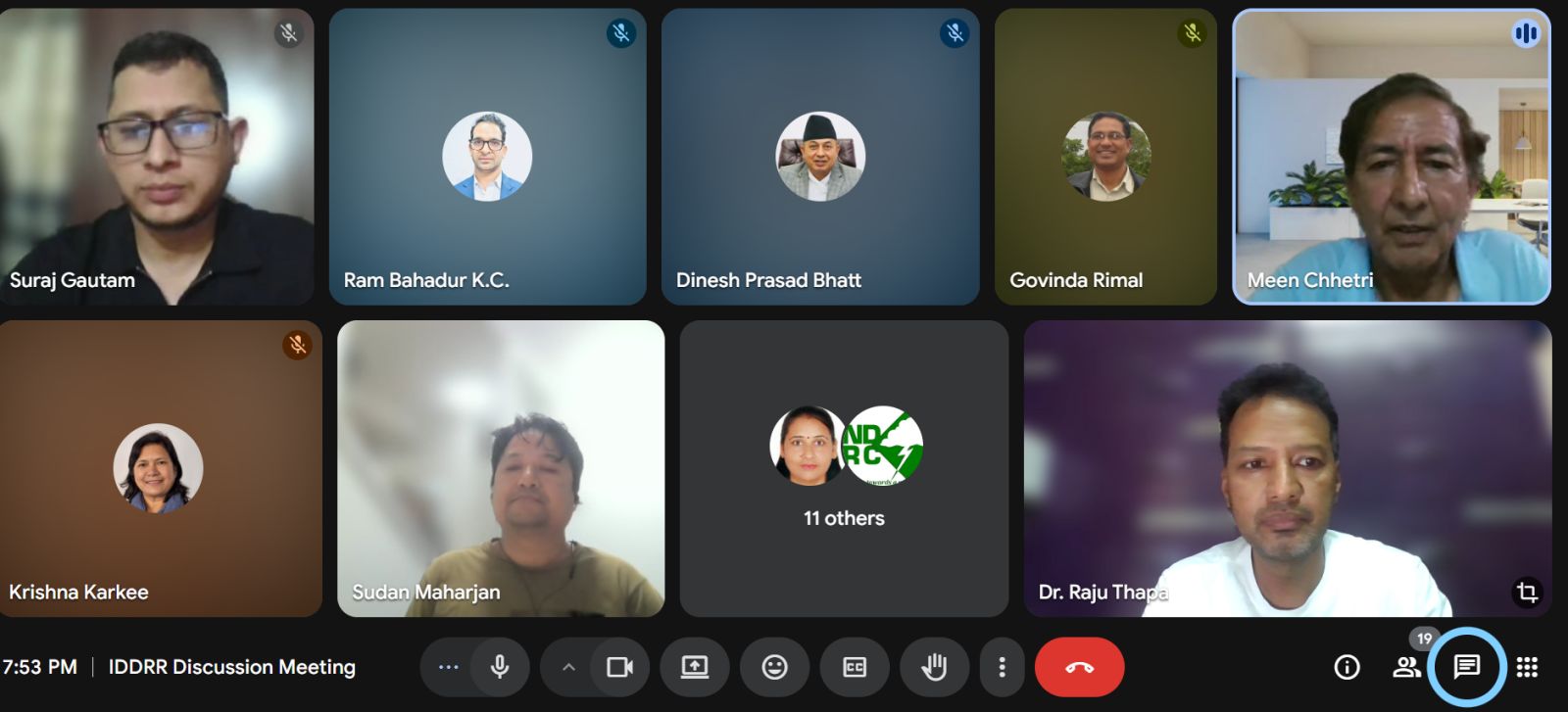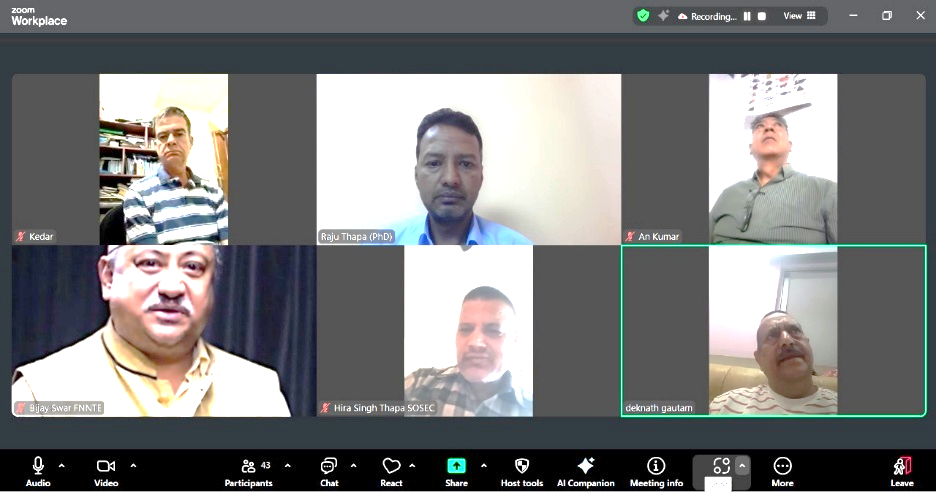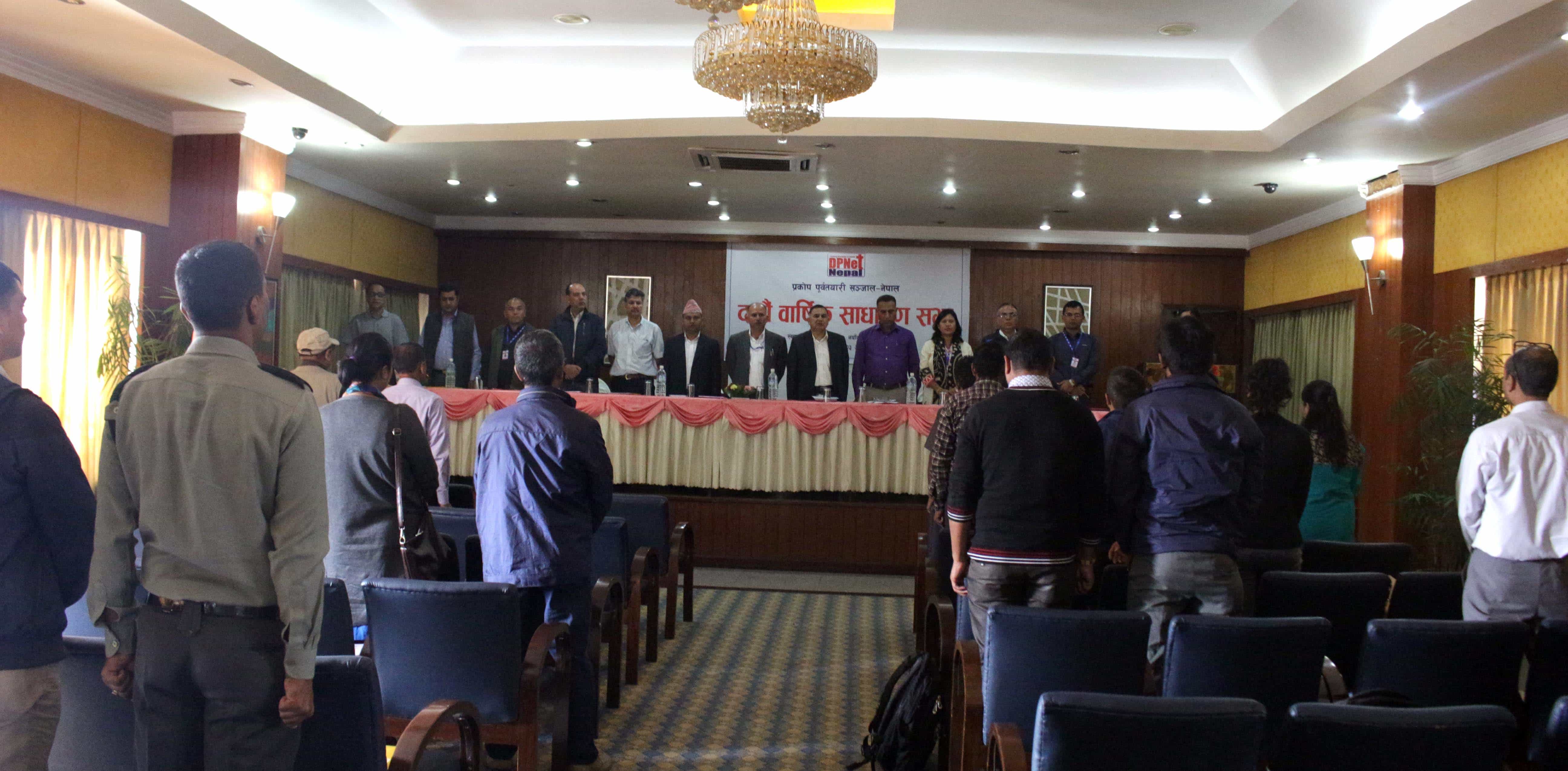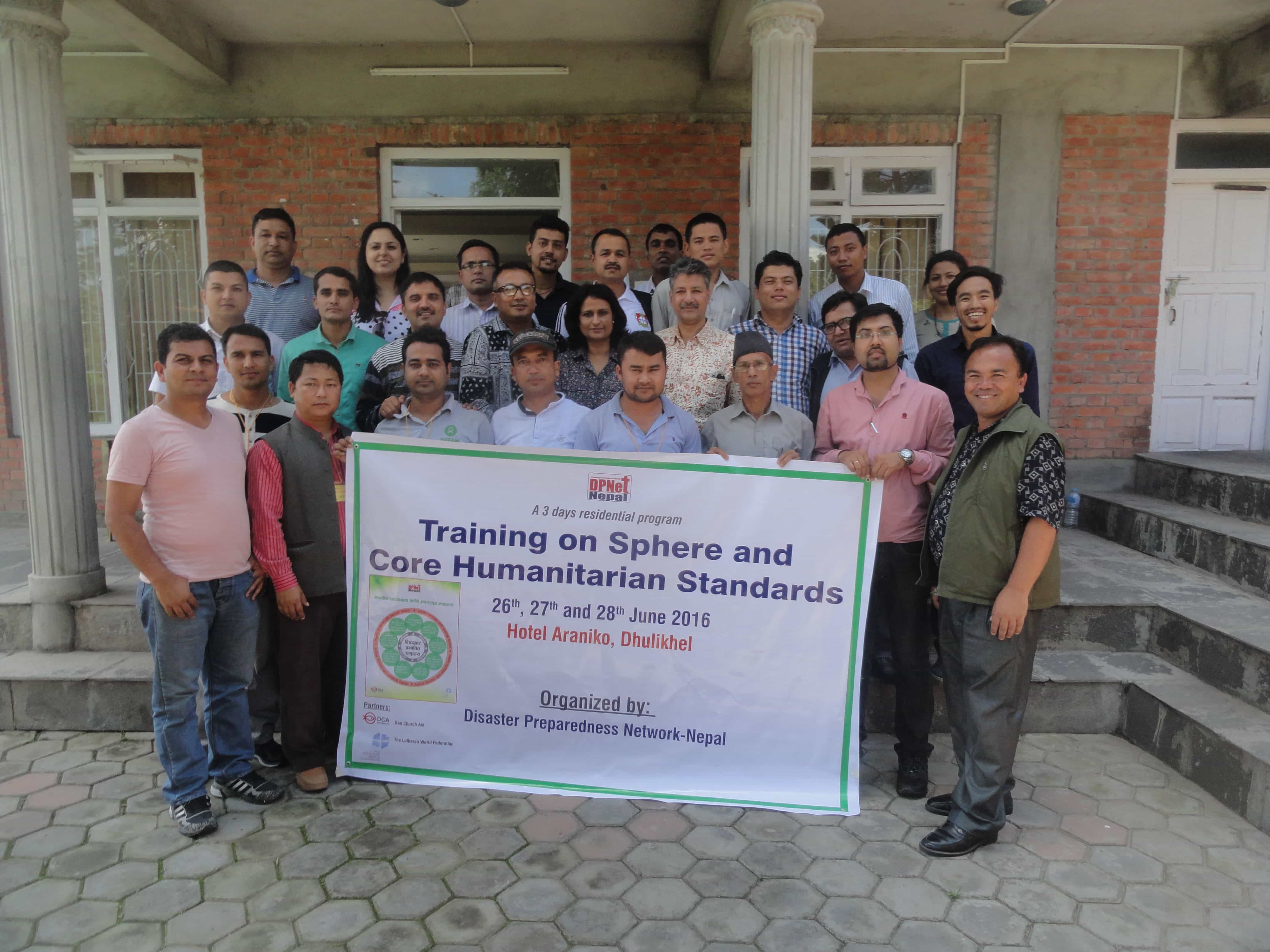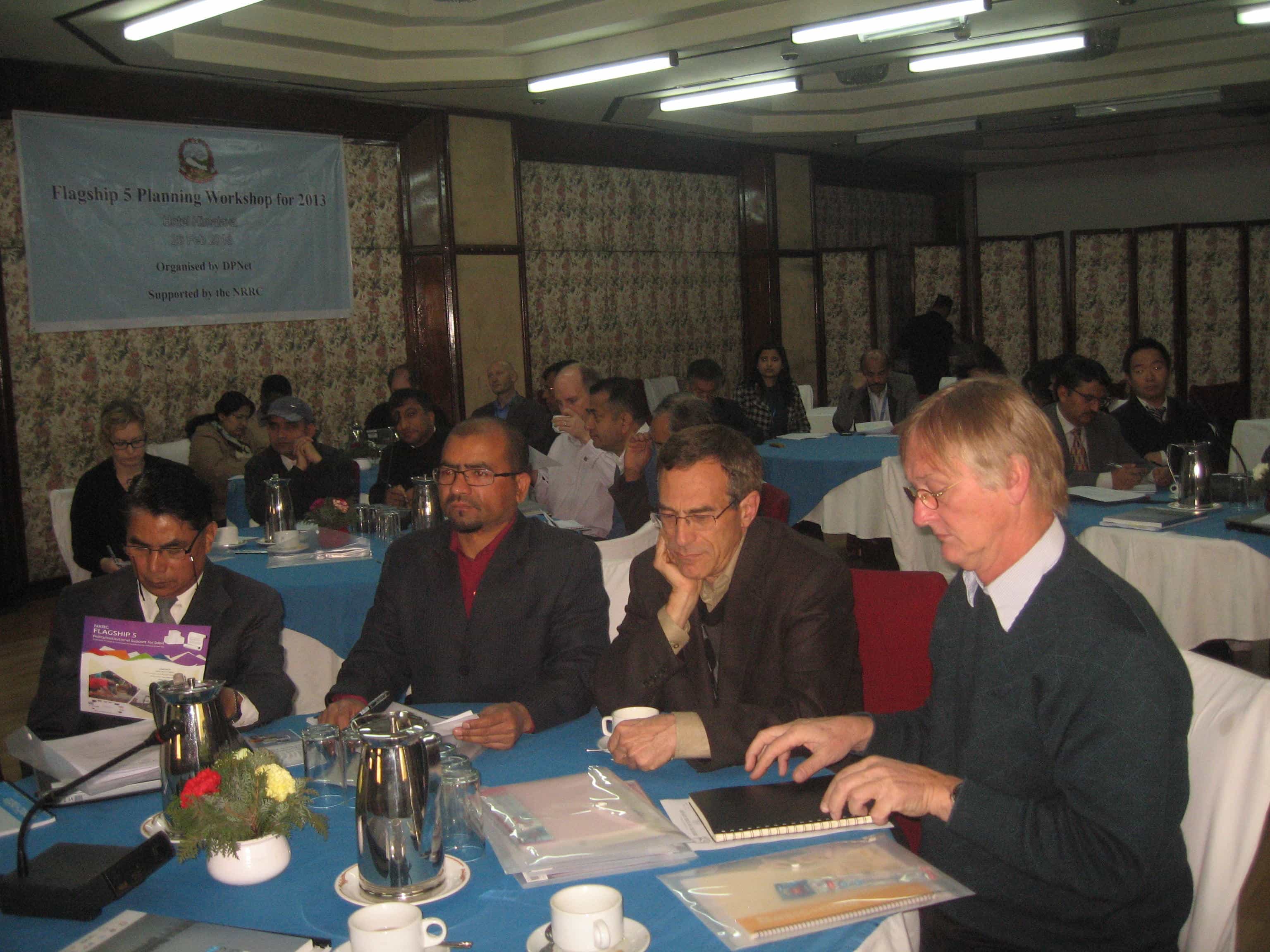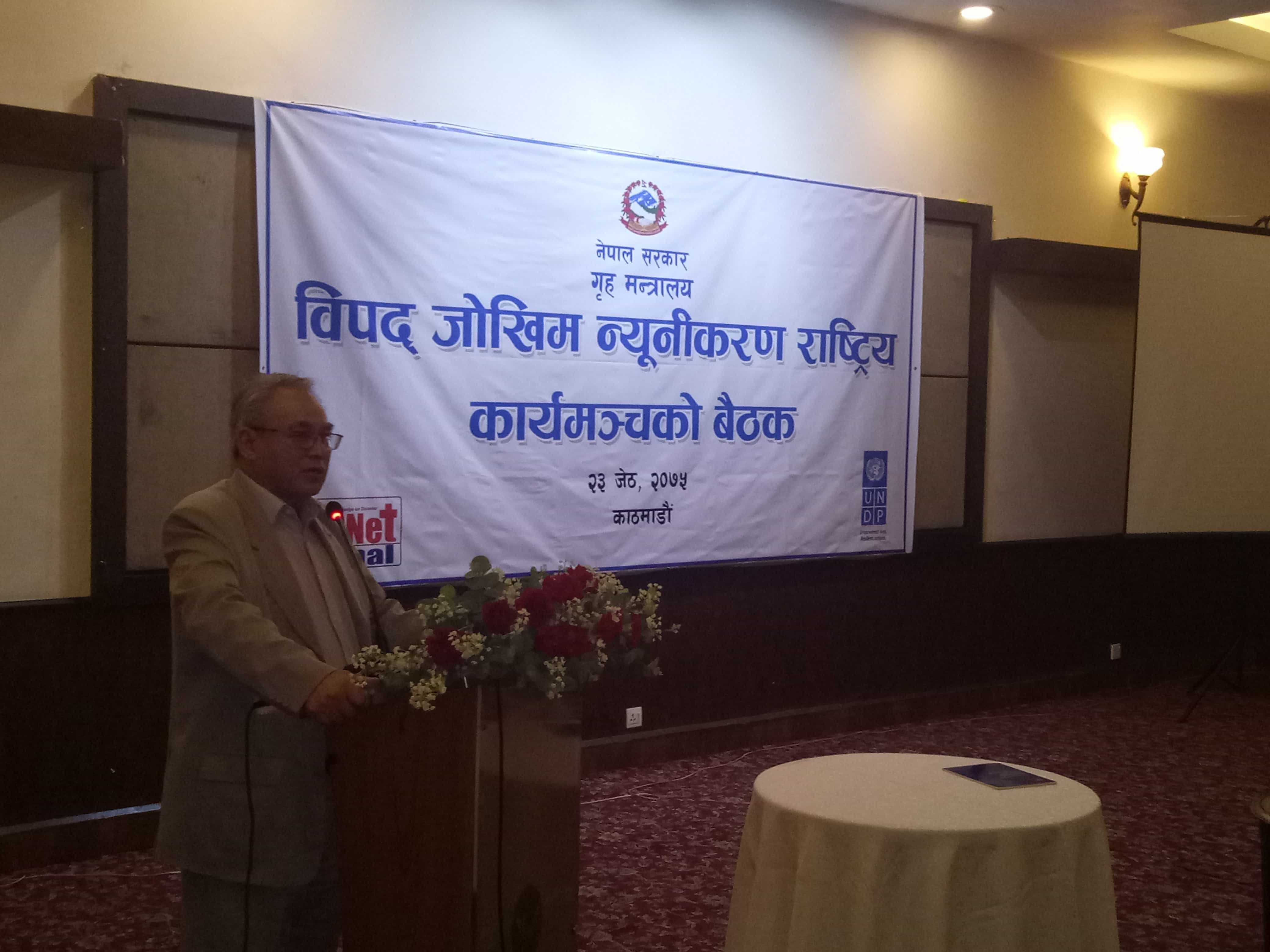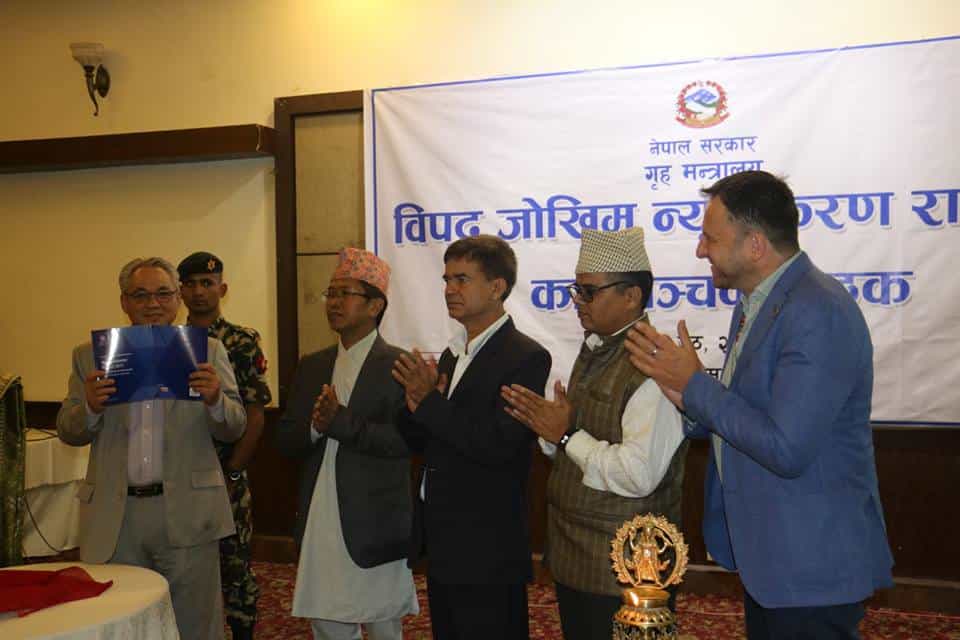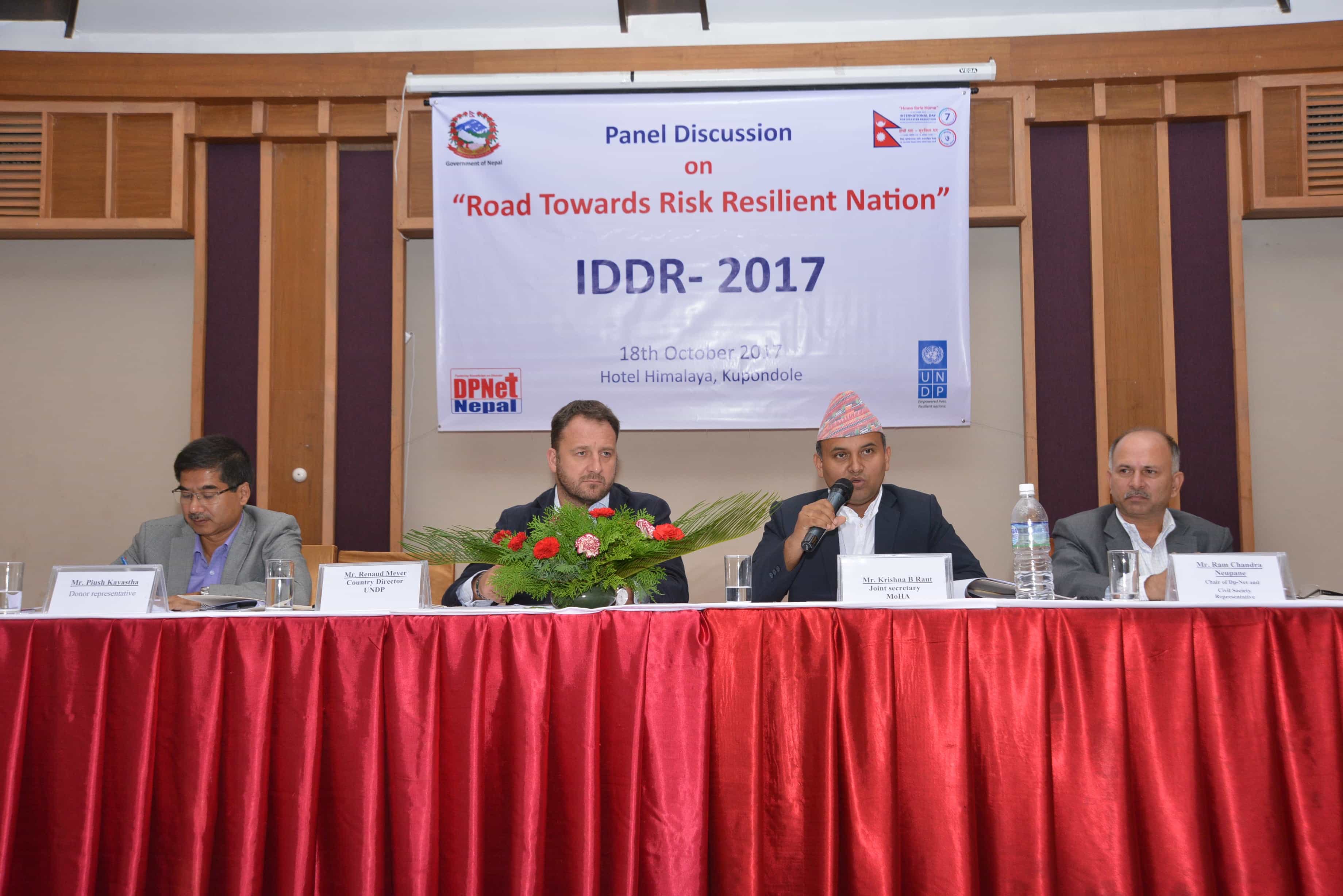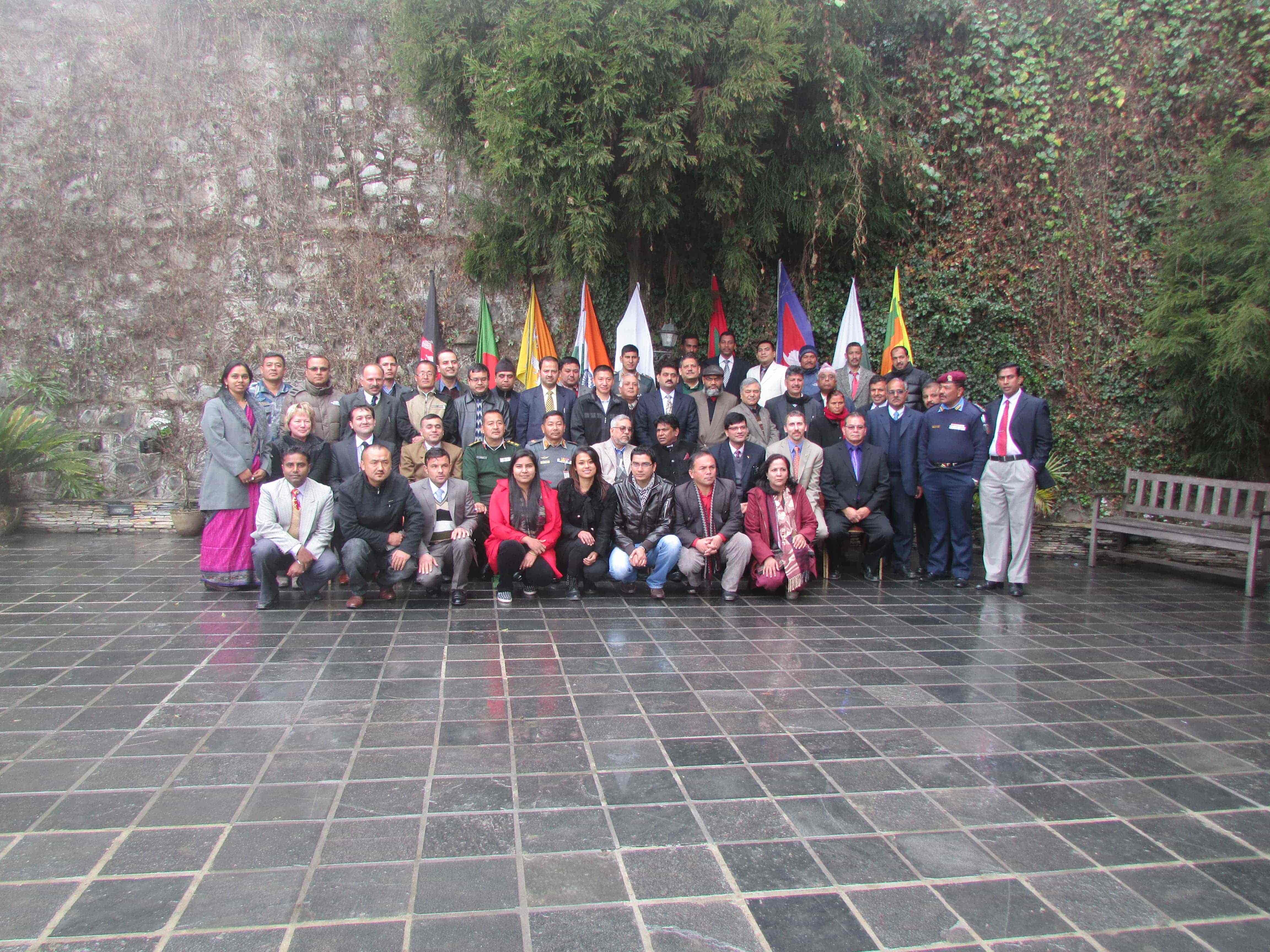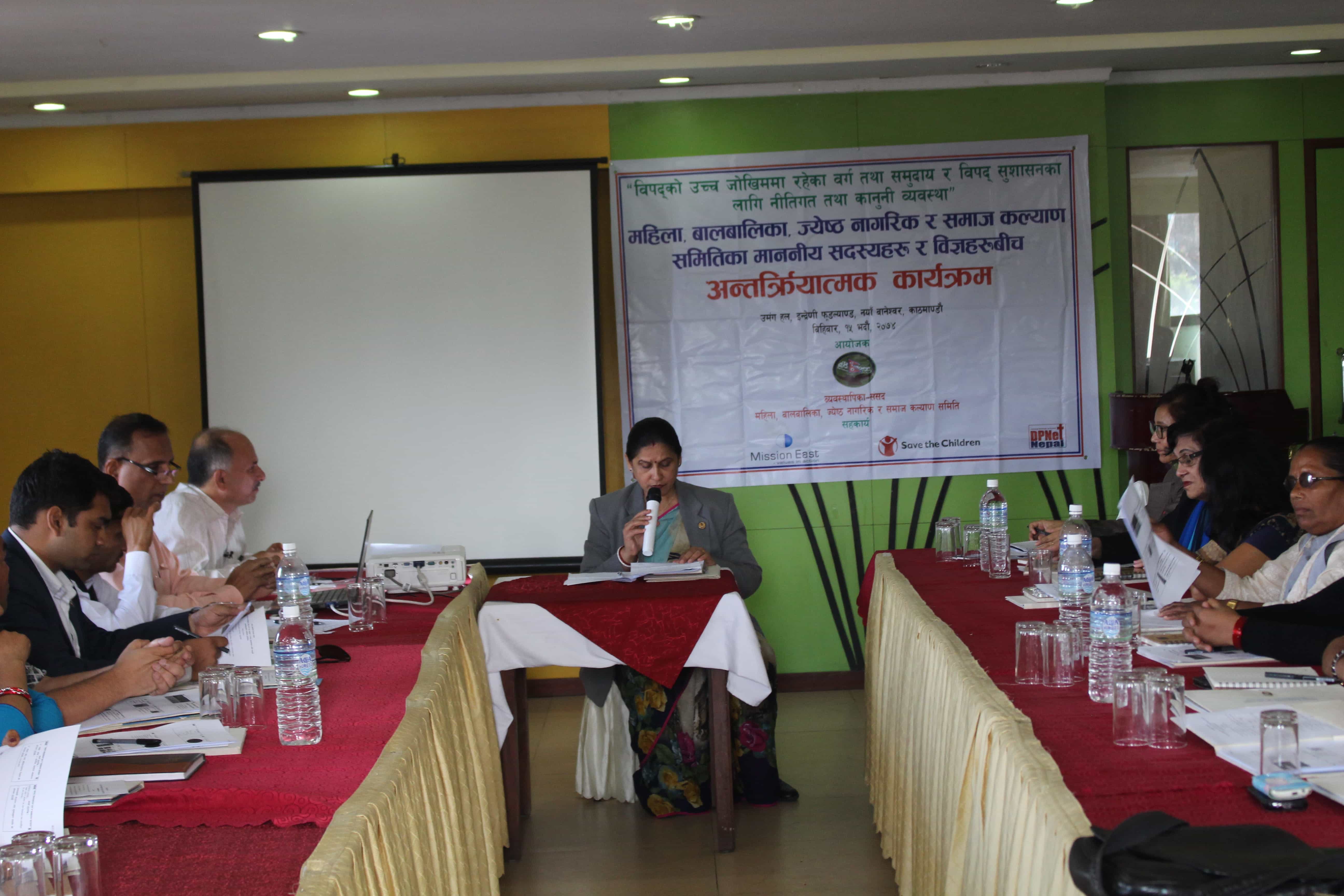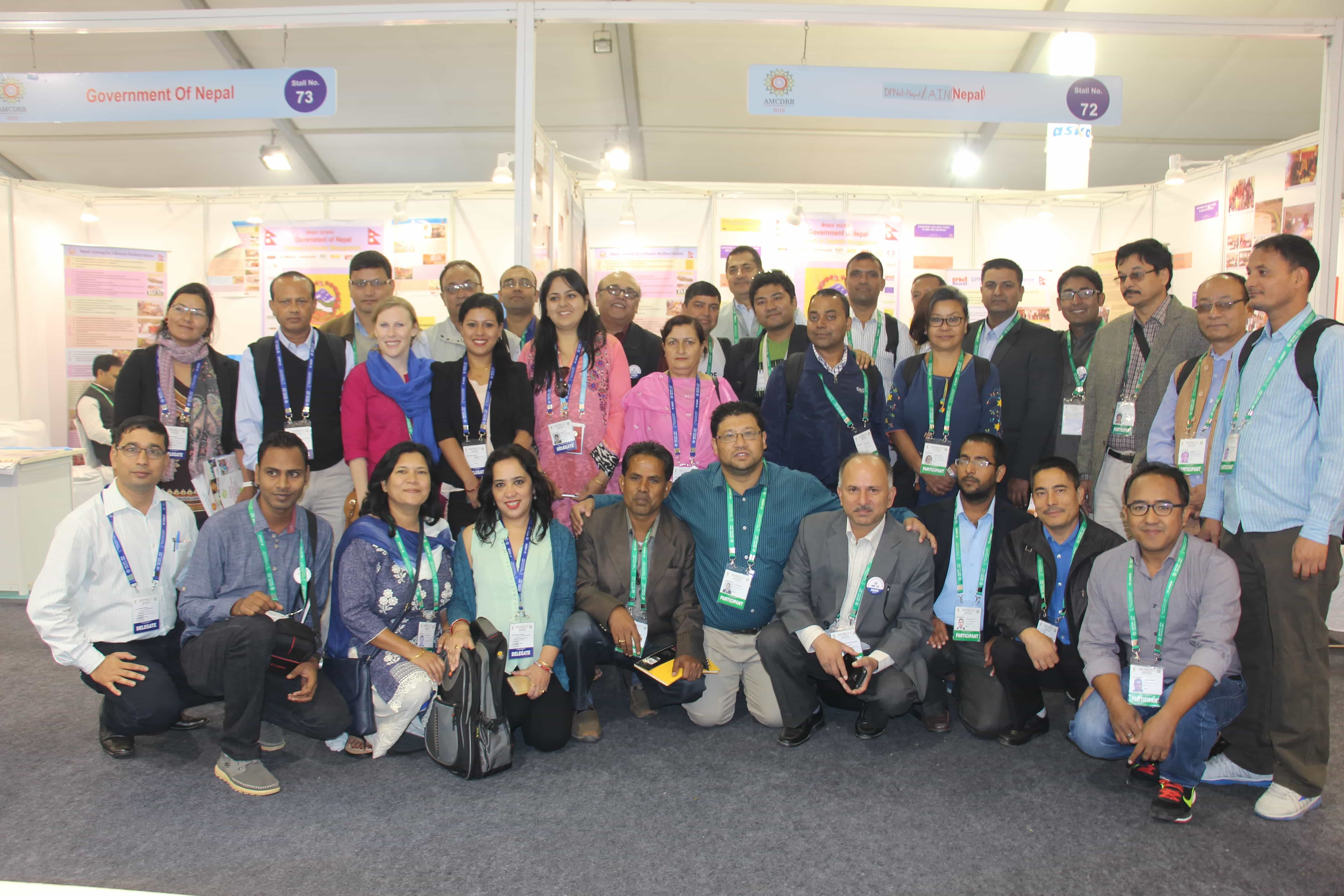DPNet Leads Joint Coordination on Monsoon Impacts and Urgent Relief Needs Across Affected Districts
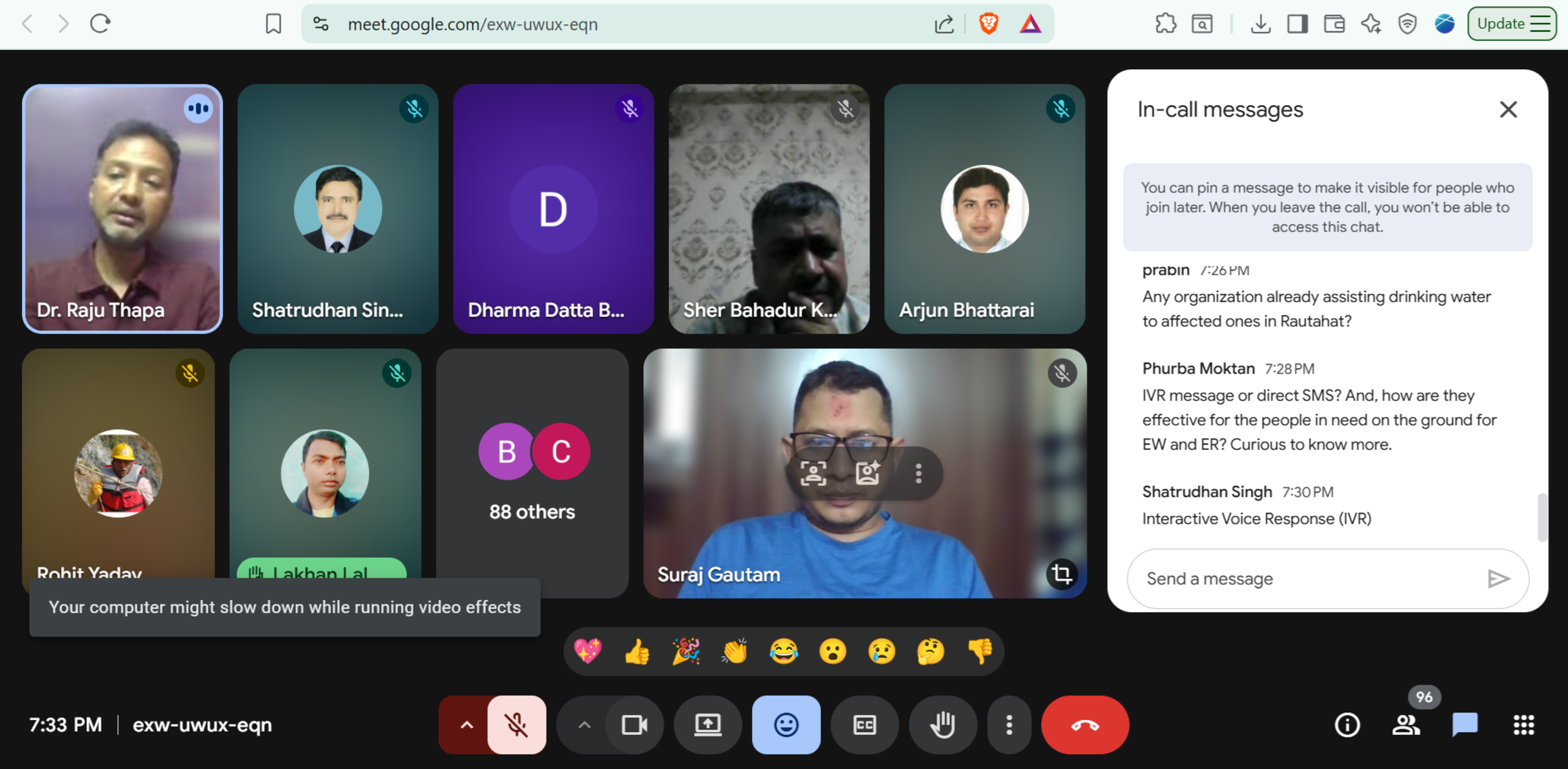
Kathmandu, October 6 – The Disaster Preparedness Network Nepal (DPNet), in collaboration with the Nepal Red Cross Society (NRCS) and the NGO Federation of Nepal, organized a virtual coordination meeting to review the impacts of recent heavy monsoon rains and assess immediate needs in the most affected areas, particularly Rautahat and Ilam districts. The session was facilitated by Dr. Raju Thapa, Chairperson of DPNet Nepal, and attended by around 100 participants representing various government agencies, humanitarian partners, and civil society organizations. The discussion aimed to consolidate field updates, identify priority needs, and strengthen coordination for an effective monsoon response.
Mr. Sher Bdr Karki, Emergency Operation Centre, Disaster Management Department highlighted the ground scenarios and how the heavy rains have triggered floods, landslides, and disruptions in transportation, communication and livelihoods, leading to urgent humanitarian needs in the affected communities. The reports from Ilam and Rautahat districts indicated record-breaking rainfall, with several locations receiving over 300 millimeters in between 12 hours to 36 hours.
In Ilam, local authorities have already confirmed 37 fatalities (16 women and 21 men) and significant damage to over 70 houses. Many rural roads and internet connections remain disrupted. The District Disaster Management Committee (DDMC) has held an emergency meeting and initiated damage mapping to coordinate response actions. Humanitarian agencies including IOM, Save the Children, and NRCS have begun emergency planning to deliver non-food items (NFIs), tarpaulins, and emergency shelter support.
In Rautahat, several rural and urban municipalities like Durga Bhagwati (Ward No 2, 5, School tole, Paswan tole, Bhotiyaghat, Santpur, Dudhyabhar, Bijaypur), Maulapur (Samanpur, Kathariya), Rajpur, Gujara, Ishnath, Dewahi Gonahi, and Garuda have been seriously impacted. Mr. Shatrudhan Singh shared that parts of Rautahat, including Gaur, are experiencing over three feet of water inundation. He further mentioned that the Badharwa region has been cut off from communication networks, making real-time assessments difficult. Mr. Rohit Yadav also highlighted the likelihood scenarios of risks of water-borne and vector-borne diseases such as diarrhoea and dysentery, particularly in inundated areas and Musahar settlements. Partners highlighted urgent needs for hygiene kits, safe water, shelter items, and ready-to-eat food. In Birgunj, 120 households from Musahar communities have already requested hygiene support. Humanitarian partners also reported impacts from Mahottari, Sarlahi, and Jhapa districts. In Mahottari, floodwaters reached 1.5 feet even inside the Red Cross building. In Sarlahi, over 1,600 households are inundated, with local communities facing severe food insecurity.
Besides the impacts, the partners and local organization also highlighted some good practices opted in the region. Sajag Samaj in Rautahat practiced Early Warning Information dissemination through the Women led CDMC groups via hand mikes, temple loudspeakers, Interactive Voice Response (IVR), etc. The voice messages were dispatched in local Bajika language significantly improving outreach and response rates. Mr. Suraj Gautam also highlighted the role of Disaster Volunteers and Psycho-social First Aid (PFA) volunteers in the Rautahat during this difficult period. Besides, the partners and local organizations have initiated several immediate response activities, including the reinforcement of vulnerable riverbanks, distribution of non-food items (NFIs), operation of community kitchens, and support to displaced and vulnerable populations. Save the children supported has already supported 100 families in Balara Sarlahi and 150 families in Mahagadhimai Bara. They have planned and prepositioned for 1500 NFI families in Madhesh province while they have already planned 80 NFI for Durga Bhagawati and 300 NFI for Rajdevi as per the request from CDO office and DUDBC.
The meeting emphasized the urgent need to complete Initial Rapid Assessments (IRAs) within 24 hours of disaster onset to ensure evidence-based action. It was briefed that the several districts have yet to complete the Initial Rapid Assessment (IRA), which is expected within 24 hours of the onset of the disaster. The stakeholders emphasized the need for stronger collaboration with District Disaster Management Committees (DDMCs) to ensure timely assessments, identification of priority needs, and delivery of targeted relief. The participants also highlighted the importance of improving information management at DDMC level, suggesting remote or in-person support to consolidate data and minimize overlap between clusters. Besides, the Participants also urged local and provincial authorities to activate cluster mechanisms and coordinate closely with humanitarian actors to identify priority needs, avoid duplication, and ensure equitable assistance delivery.
Key Gaps and Immediate Priorities
- Completion and publication of IRA reports for all affected districts on a central platform.
- Provision of life-saving assistance, including food, clean water, hygiene kits, and temporary shelter.
- Coordination through DDMCs for coherent and non-duplicative response planning.
- Assessment of infrastructure damage, particularly to roads and embankments obstructing water flow.
- Gender-responsive humanitarian response (Integration of Gender Equality and Social Inclusion (GESI) and GBV-sensitive approaches), ensuring women and vulnerable groups are prioritized during relief distribution and recovery planning.
The meeting concluded with a shared commitment to strengthen coordination, share real-time data, and mobilize resources collectively. The meeting also appreciated the efforts of frontline responders and emphasized that “timely assessments and coordinated action are key to minimizing loss and ensuring efficient relief distribution.” Mr. Dharma Datta Bidari, Executive Director of the Red Cross, shared that the red cross team has already been deployed in the field for the coordination and support. He further emphasized that the Red Cross will work in close coordination with the Government, security agencies, and development partners to finalize the Initial Rapid Assessment. Concluding the meeting, Mr. Arjun Bhattarai, President of the NGO Federation, called for collective collaboration, coordination, and support to effectively respond during this challenging time.
